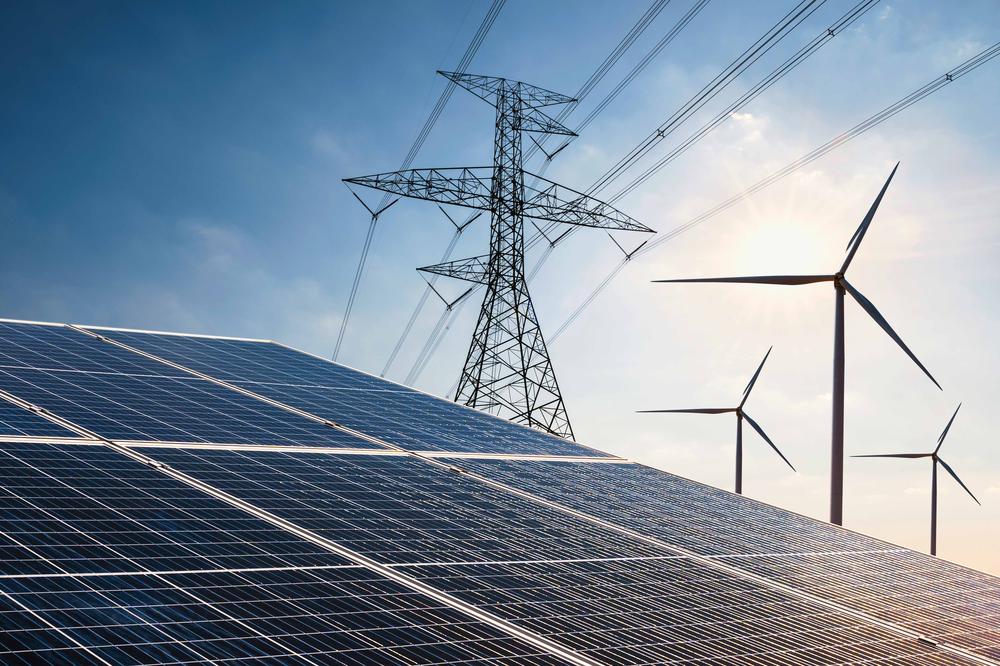
The B2B platform for the best purchasing descision. Identify and compare relevant B2B manufacturers, suppliers and retailers
Close
Filter
Result configuration
Continents
Select continent
Locations
Result types
Company type
Select company type
Industries
Select industry
Company status
Select company status preset
Number of employees
Min.
Max.
Founding year
Optimum Tracker
Meyreuil, France
A
11-50 Employees
2009
Key takeaway
Optimum Tracker specializes in optimizing solar photovoltaic power plants, offering patented solar tracking systems that enhance performance and efficiency. Their commitment to innovation and quality ensures that clients receive reliable and effective solutions for maximizing solar energy production.
Reference
Core business
Solar trackers – Optimum Tracker
Optimum tracker is an innovative solar tracker company. We are experts in optimization of solar power plants. Request a quote with us!
Startak
Kongens Lyngby, Denmark
A
1-10 Employees
2015
Key takeaway
Startak specializes in solar tracking systems, offering a range of tracker control units (TCUs) designed for easy maintenance and user-friendly operation. Their products include various power options and advanced control systems, ensuring efficient management of solar parks.
Reference
Core business
Startak – Sun tracking systems
Mechatron
Heraklion Municipal Unit, Greece
B
11-50 Employees
2000
Key takeaway
The company specializes in the design and implementation of advanced solar tracking systems, having developed innovative solutions that increase energy production while reducing operating costs. With over seventeen years of experience, they have established a significant market presence in Europe for their sun tracking technologies.
Reference
Product
Single Axis Trackers | Mechatron
Looking for more accurate results?
Find the right companies for free by entering your custom query!
25M+ companies
250M+ products
Free to use
KSI Solar
Switzerland
A
11-50 Employees
2022
Key takeaway
KSI is a leading expert in photovoltaic tracking systems, boasting over 17,500 successful projects globally. Their solar tracking products are designed for scalable PV systems, making them a preferred choice for efficient energy management.
Reference
Product
Solar Trackers by KSI Solar
KSI is a world-leader in the design, supply and installation of photovoltaic tracking systems, with over 17,500 successful projects worldwide. From the hottest Middle Eastern deserts to sub-zero temperatures in Northern Canada, these systems have been installed in the most challenging environments across 5 continents.
Mokun Renewable
Huangpu District, China
D
51-100 Employees
2010
Key takeaway
Mokun Renewable is a leading manufacturer of solar tracking systems, offering a range of innovative solutions designed to optimize solar energy capture across various environments. Their expertise spans from R&D to on-site support, ensuring effective installation and operational efficiency.
Reference
Core business
Solar | Mokun Renewable
Mokun Renewable - Global leader in solar tracker technology and manufacturing
solar projects
China
D
51-100 Employees
2006
Key takeaway
TR SOLAR specializes in solar solutions, including their advanced Solar Tracking System, which utilizes high-precision algorithms and top-tier sensors to ensure accurate and reliable tracking of the sun's position. This technology enhances solar energy generation by optimizing the angle of solar panels throughout the day.
Reference
Product
Solar Tracking System – TR SOLAR ENERGY GROUP CO.,LTD.
The solar tracker uses high-precision astronomy algorithm to calculate the angle of the sun, combined with high-performance microcontroller, making the system accurate and reliable, not rainy days interference, using international first-line brand tilt sensor, real-time closed-loop feedback tracking angle, automatic tr
Rocking Solar
United States
B
1-10 Employees
-
Key takeaway
The company has developed a patent-pending Rocking Solar rooftop tracker, which is a low-profile, wind-defensive, single-axis solar tracking system. This innovative design enhances efficiency while reducing costs and the need for ground penetration, making it ideal for low-slope roofs and applications where such penetrations are not desired.
Reference
Core business
Rocking Solar | High Efficiency Solar Tracking System
Rocking Solar rooftop tracker is a low profile, wind defensive, single axis tracker solution designed to be the most efficient PV solar energy system on the market.
HDsolar
Hangzhou City, China
D
251-500 Employees
2009
Key takeaway
HDsolar is a prominent supplier of solar tracking systems, having launched its Planetary Series Tracking System, which features an independently developed control system and intelligent tracking algorithm. The company is dedicated to offering comprehensive solar power station solutions for various projects, ensuring innovative and efficient solar energy deployment.
Reference
Core business
China Solar Tracker, Solar Ground Mounting System, Solar Rooftop System Manufacturers, Suppliers, Factory - HDSOLAR
Hangzhou Huading New Energy Co., Ltd: Supplier of solar mounting systems. Solution provider and manufacturer of solar tracking system, mounting systems of grounding, rooftop carport with competitive price.

NEXTRACKER AUSTRALIA PTY LTD
Sydney, Australia
A
11-50 Employees
2016
Key takeaway
Nextracker is a leading solar tracker company that specializes in advanced single-axis solar tracking systems, which optimize energy production and reduce costs.
Reference
Core business
#1 Solar Tracker Company in America | Nextracker
Nextracker, America's leading solar tracker company, manufactures the world’s most advanced single-axis solar trackers for a cleaner future. Call us now.

DEGERenergie GmbH & Co. KG
Ofterdingen, Germany
A
51-100 Employees
1999
Key takeaway
DEGER is a leading manufacturer of solar tracking systems, offering a wide range of single and dual-axis solutions that significantly enhance energy yield. Their innovative MLD-sensor technology ensures optimal alignment of solar modules, resulting in an average 42.9% greater energy output compared to fixed systems.
Reference
Product
Tracking System Accessories - DEGER Energie
Tracking System Accessories…
Technologies which have been searched by others and may be interesting for you:
A solar tracking system is a technology designed to optimize the angle of solar panels in relation to the sun’s position throughout the day. By dynamically adjusting the panels' orientation, these systems can significantly enhance the efficiency of solar energy capture. This mechanism can be classified into two main types: single-axis and dual-axis trackers. Single-axis trackers rotate on one axis, either horizontally or vertically, while dual-axis trackers can move in both directions, allowing for maximum sunlight exposure. Implementing a solar tracking system can lead to increased energy production by up to 25% or more compared to fixed systems, making them an attractive option for solar energy providers.
A solar tracking system significantly enhances energy efficiency by adjusting the position of solar panels to follow the sun's trajectory throughout the day. This dynamic alignment allows the panels to capture sunlight at optimal angles, maximizing energy absorption. As a result, solar trackers can increase energy production by up to 25-50% compared to fixed installations. Furthermore, these systems minimize shading and maintain consistent performance even during varying weather conditions. By utilizing advanced technology and sensors, solar tracking systems ensure that solar panels generate the highest possible amount of electricity, making them a valuable investment for both residential and commercial applications.
1. Single-Axis Solar Trackers
These systems rotate on one axis, usually oriented north to south, allowing solar panels to track the sun's movement across the sky throughout the day. This increases energy production by capturing more sunlight compared to fixed systems.
2. Dual-Axis Solar Trackers
Dual-axis trackers move on two axes, enabling them to follow the sun's path both horizontally and vertically. This type maximizes solar energy capture by adjusting for seasonal variations in the sun's position, making them ideal for high-efficiency applications.
1. Increased Energy Production
A solar tracking system optimizes the angle of solar panels throughout the day, allowing them to follow the sun’s trajectory. This alignment can significantly boost energy output by capturing more sunlight compared to fixed systems.
2. Enhanced Efficiency
By maintaining the ideal orientation towards the sun, solar tracking systems improve overall efficiency. This leads to a higher return on investment, making solar energy projects more economically viable over time.
3. Better Performance in Low Light Conditions
These systems can also enhance performance during low light periods, such as early mornings and late afternoons. This capability allows for greater energy generation throughout the entire day.
4. Long-term Cost Savings
While the initial installation cost may be higher, the increased energy production and efficiency can lead to substantial long-term cost savings on energy bills and quicker payback periods for solar investments.
The cost of a solar tracking system can vary significantly based on various factors including the type of system, its size, and the specific features included. Typically, prices for solar tracking systems range from $1,500 to $5,000 per kilowatt of capacity. Type of System Single-axis trackers tend to be more affordable, while dual-axis trackers, which provide more precise tracking, can be more expensive. Installation Costs Installation costs also play a crucial role in the overall expenditure, as they can add an additional 20-30% to the total price.
Some interesting numbers and facts about your company results for Solar Tracking System
| Country with most fitting companies | United States |
| Amount of fitting manufacturers | 10000 |
| Amount of suitable service providers | 10000 |
| Average amount of employees | 11-50 |
| Oldest suiting company | 1999 |
| Youngest suiting company | 2022 |
20%
40%
60%
80%
Some interesting questions that has been asked about the results you have just received for Solar Tracking System
What are related technologies to Solar Tracking System?
Based on our calculations related technologies to Solar Tracking System are Water/Ocean Cleaning Technologies, Waste Management, Renewable Energy, Sustainable Fashion, Smart Grid
Who are Start-Ups in the field of Solar Tracking System?
Start-Ups who are working in Solar Tracking System are KSI Solar
Which industries are mostly working on Solar Tracking System?
The most represented industries which are working in Solar Tracking System are Oil, Energy and Gas, IT, Software and Services, Other, Electronics and Electrical engineering, Construction
How does ensun find these Solar Tracking System Manufacturers?
ensun uses an advanced search and ranking system capable of sifting through millions of companies and hundreds of millions of products and services to identify suitable matches. This is achieved by leveraging cutting-edge technologies, including Artificial Intelligence.